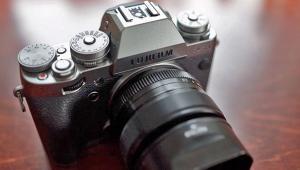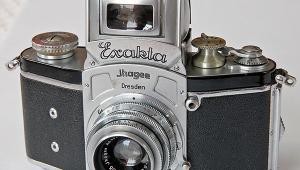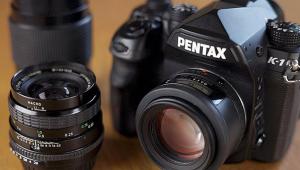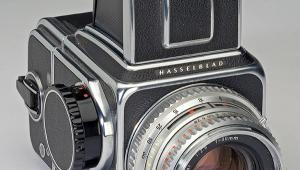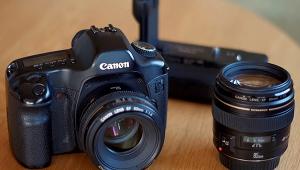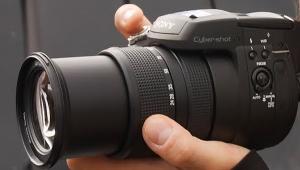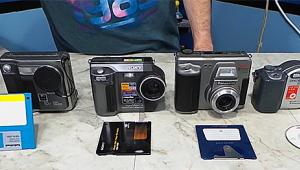Classic Cameras
The 1950 Canons; Classic 35mm Cameras
1950 was an important year for Canon. As they continued to make the Model IIB, incorporating some changes that resulted in an improved camera, they also produced several trial versions, between serial 50000 and serial 50200, of the models that later became the Canon IV and Canon III.
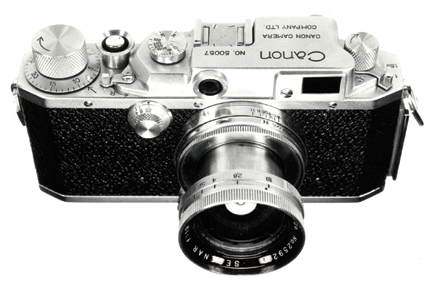 |
|
|
Most, if not all, of the concepts first reflected in these new 200 or fewer cameras originated with Hiroshi Suzukawa, a talented designer who had joined Canon in '48. The trial cameras all incorporated a completely new shutter design: the highest speed was increased to 1/1000 sec, and the speeds on the fast and slow dials were now split at 1/25 instead of 1/20. A "T," for "Time," setting was included on the slow speed dial; when engaged, it locked the shutter open until the slow dial was moved to another setting. The "B" setting remained on the fast speed dial. The shutter guard ring was also redesigned to be wider and allow the use of a cable release without first having to remove the ring. Although the novel pop-up take-up film wind spool did not appear until '51, the reworked '50 winding shaft was designed with a notch that allowed use of the Rapid Wind Baseplate, a Leicavit-like accessory. Later Canon literature states that this accessory can only be used with cameras with serials above 50200, but it will in fact work with all bottom-loading Canons beyond 50000. Since Canon itself made a distinction between cameras numbered below and above 50200, it seems very likely that all the cameras in the 50000-50200 group were originally regarded as trial models or prototypes.
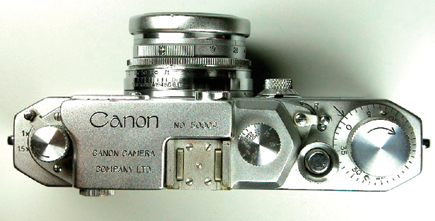 |
|
|
As part of the shutter redesign, the Advance-Rewind lever mechanism was also revised: its fulcrum was now set on a slight step which formed the right-hand end of the cover shell for the rangefinder-viewfinder. The trial cameras have various markings for the lever's function: some are marked with a quarter-circular arrow and the single letter "R," others with a quarter-circular double arrow and the letters "A" at the advance end and "R" at the rewind end. Still others have simply the double arrow with the letter "A" on the camera's main top plate and the "R" on the step incorporated into the cover shell. These variant markings simply suggest unimportant ongoing cosmetic second thoughts.
Cameras introduced by other manufacturers in `50 included the Leica IIIf, Contax IIa, and the later synchronized variant of the Nikon M. With its `49 IIB-style triple-magnification combined view and rangefinder and the new internal and external changes, the Canon models that developed from the tests carried out in this small trial batch could easily outperform any of their contemporaries; and time has shown, as most camera repairmen will testify, that Canons of this period were built at least as well as those from any other 35mm manufacturer.
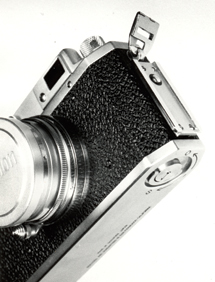 |
|
|
The `50s Canons were also important because, for the first time, most of them included a provision for internal flash synchronization, which became the Canon standard until the Model VT. Outwardly, this was apparent in a new rail on the rewind end of the camera body, onto which it was possible to slide a flash bulb firing unit. Synchronization was now a function of the camera shutter mechanism, not of an accessory. The synchronized `50 camera was a trial version for the model eventually named the Canon IV: it can be distinguished by the side flash rail, the newly designed 1/1000 sec shutter, and the fact that its serial falls within the 50000-50200 range.
We can call this model the "Canon IV-1950." Its mechanism was housed in a new variety of outer body shell, which was shared with the late version of the Canon IIB, finished on the inside in a dull gray rather than the black that later became standard. Also new was an internal bottom cover for the shutter crate: it incorporated a loading diagram and kept prying eyes (and also ill-informed folk with screwdriver mania) away from the shutter drum tensioning adjustments and the new flash contacts. Some of these cameras were used to illustrate the earliest Canon IV instruction book, and many were retained within the Canon organization for testing.
 |
|
|
Some of them, however, were distributed during `50 to a few experienced photographers for more widespread evaluation under practical circumstances. For example, Canon later advertised in several US photo magazines that "Wallace Litwin uses his Canons (Serial Nos. 50065 & 50095) for his Magazine Assignments." Another who very likely received one or two cameras for testing was Horace Bristol, a highly respected photojournalist who, about `52, published a book, largely photos, about American soldiers on furlough in Tokyo. In this book he gave generous credit to the Canon equipment that he had used to illustrate the Tokyo nightlife scene. Some trial cameras later reached the used camera market, and still turn up today.
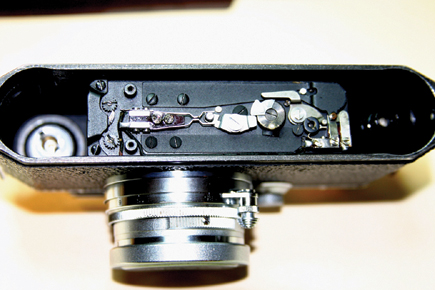 |
|
|
